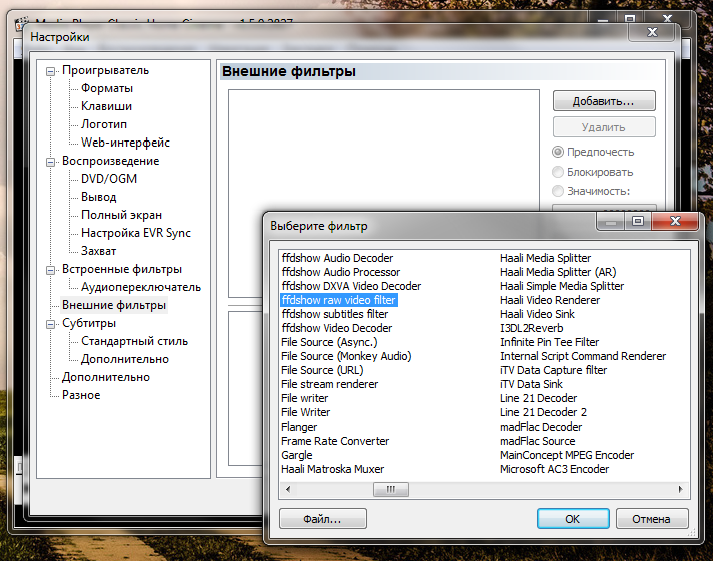PC Gamer Editor Alex Wiltshire talked with neuroscientists and psychologists to find out how many frames per second the human eye and brain need in games. The answer to the question turned out to be difficult.
Many gamers know that in games it is important not only the number of frames, but also the stability of their arrival: for example, even 30 frames can be perceived much more pleasant than “chattering” in the range from 40 to 50.
This is due to the fact that drawdowns in some scenes are perceived as those notorious “brakes” (the brain expects to see a certain movement with the same smoothness as the others, but the computer does not have time to process the image at the required speed).
Therefore, sometimes developers who have not paid enough attention to optimization release a game with a limit of 30 frames even on PC, which usually causes noticeable outrage among gamers. And for console games without multiplayer mode, 30 frames is generally the standard.
However, in his study, Wiltshire only touched on stable frame rates and did not touch on the issue of vertical synchronization and other computer parameters that affect the perception of the picture.
Eyes and brain work in tandem
Disputes about how much human eye can perceive frames per second, have been ongoing for a long time largely because there is no clear answer to this question.
As Wiltshire notes, a person does not read reality like a computer, and visual perception is entirely based on the joint work of the eyes and brain. This is why, for example, people see movement and light differently, and peripheral vision is better at some aspects of a picture than primary vision - and vice versa.
The time it takes a person to perceive visual information is the sum of the speed of light entering the eye, the speed of transmission of the received information to the brain and the speed of its processing.
According to psychology professor Jordan DeLong, when processing visual signals, the brain is constantly calibrating, calculating averages from thousands and thousands of neurons, so the entire system is more accurate than its individual components.
As researcher Adrien Chopin notes, the speed of light can hardly be changed, but it is quite possible to speed up the part of visual perception that takes place in the brain.
Games are perhaps the only way to significantly improve the main indicators of your vision: sensitivity to contrast, attention and the ability to track the movement of many objects at the same time.
Adrien Chopin, cognitive brain researcher
As Wiltshire points out, it's the gamers who are most concerned about high frame rates who are able to process visual information faster than anyone else.
Differences in the perception of movement and light
If the light bulb operates at a frequency of 50 or 60 Hz, the lighting appears constant to most people, but there are those who notice flickering in this case. This effect can also be achieved by turning your head while looking at the car's LED headlights.
At the same time, some fighter pilots during tests could see images that appeared on the display for 1/250th of a second.
However, both of these examples do not speak to how the human eye perceives games where movement is the main parameter.
As Professor Thomas Busey notes, at high speeds (latency less than 100 milliseconds), the so-called Bloch's law comes into play. The human eye is unable to distinguish a bright flash that lasted a nanosecond from a less bright flash that lasted a tenth of a second. A camera works on a similar principle, which can let in more light at a slow shutter speed.
However, Bloch's Law does not mean that the limit of human perception stops at 100 milliseconds. In some cases, people can discern artifacts in an image at 500 frames per second (2 millisecond delay).
As Professor Jordan DeLong notes, the perception of movement largely depends on the position a person is in. If he sits still and watches the object, then this is one situation, but if he goes somewhere, then it is completely different.
This is due to the differences between primary and peripheral vision that people inherited from their primitive ancestors. When a person looks directly at an object, he sees the smallest details, but his vision does not cope well with fast-moving objects. Peripheral vision, on the other hand, suffers from a lack of detail, but is much faster.
This is exactly the problem that the developers of virtual reality helmets faced. If 60 or even 30 Hz is quite enough for a monitor that a person is looking at directly, then in order for the viewer to feel normal in VR, the frame rate must be increased to 90 Hz. This is because the helmet also provides a picture for peripheral vision.
According to Professor Busey, if a user is playing a first-person shooter game, then the increased frame rate generally allows him to perceive the movement of large objects better than small details.
This is due to the fact that during the game the gamer does not stand in one place, waiting for enemies, but moves in virtual space using the mouse and keyboard, also changing his position relative to opponents who may appear in different parts monitor.
How much to hang in frames
Scientists have differing opinions about how many frames per second a person needs. Professor Busey believes it's worth going at least past the 60Hz mark for comfort, but he doesn't know if going between 120 and 180fps will make a difference for some people.
Psychologist DeLong believes that a frame rate above 200 frames will be perceived by any viewer as real life, however, he is convinced that after 90 frames the difference for most people becomes minimal.
Researcher Adrienne Chopin sees things differently. Yes, the more frames the better, but the human brain stops receiving useful new information from the picture at a frequency above 20 Hz. According to the scientist, in order to fix a small object, the brain needs even less.
When you want to perform a visual search, track multiple objects, or figure out the direction of movement, your brain will capture approximately 13 frames per second from the total stream. To do this, it calculates a certain average value from a number of neighboring frames, composing one of them.
Adrien Chopin, researcher
Chopin is convinced that there is no point in transmitting information above the 24 frames per second adopted in cinema. However, he understands that people see a difference between 20 and 60 hertz.
Just because you see a difference doesn't mean you'll become a better player. After 24 Hz, nothing will change significantly, although you may feel the opposite.
Adrien Chopin, researcher
What scientists agree on is that high frame rates have more of an aesthetic meaning than a practical one, and they do not believe that games should be developed in this direction.
Chopin is convinced that developers should think more about increasing resolution, and DeLong would like monitor and TV makers to think about how to achieve maximum contrast in the picture.
Cinema
In silent cinema, the standard filming and projection rate was 16 frames per second. With the advent of sound in cinema, a frequency of 24 frames per second became the standard, because the old speed of continuous motion of film was insufficient to obtain the required frequency range of a high-quality optical soundtrack. To slow down or speed up movement on the screen, there is accelerated (time-lapse) and slow motion. Filming at a frame rate different from the standard allows you to observe processes on the screen that are invisible to the eye or adds an additional artistic effect to the film.
Unlike television, which does not have a worldwide frame rate standard, in sound cinema the frame rate is standardized and 24 frames per second is the standard shooting and projection rate throughout the world. In some countries this forces the use of frequency interpolation in telecine projection. However, attempts by some developers to change the generally accepted frame rate of 24 frames to 30, close to the American standard for resolution in television, were unsuccessful, and the Todd-AO cinematic format, originally designed for such a frequency of shooting and projection, was brought to a common standard. Some formats designed for 48 and 60 frames per second were not successful. The only exception is some 3D cinema projection standards, which use double the frame rate of 48 frames per second to project a stereo pair. At the same time, for each eye the frequency remains familiar - 24 frames per second. In digital cinema, the frame rate is also accepted worldwide as 24. The fractional frame rate of 23.976 frames per second is non-standard and is used in telecine projection to interpolate to the American NTSC color television standard. All filming rates other than 24 frames per second are non-standard and are used in special cases. At the same time, attempts to increase the frequency of filming and projection to enhance the effect of presence, which began almost immediately after the advent of cinema, have not stopped to this day.
Filming and projection frequencies
- 16 - standard frequency of shooting and projection of silent cinema;
- 18 - standard frequency of shooting and projection of the amateur format “8 Super”;
- 23.976 - telecine projection frequency in the American 525/60 resolution standard, used for lossless interpolation;
- 24 is the global standard for filming and projection frequency;
- 25 - filming frequency used in the production of television films and television reports for conversion to the European resolution standard 625/50;
- 29.97 - exact frame rate of the NTSC color television standard;
- 30 - filming frequency of an early version of the Todd-AO wide-format film system;
- 48 - frequency of shooting and projection using the IMAX HD system;
- 50 - half-frame frequency of the European decomposition standard. Used in electronic cameras for HDTV;
- 59.94 - exact half-frame frequency of the NTSC color television standard;
- 60 - filming frequency in the American HDTV standard and the Showscan system.
A television
The frame rate in television is part of the image decomposition standard and, when it was created, was chosen based on the already existing frame rate of cinema, physiological criteria, and was also tied to the frequency of industrial alternating current. The physiological limit for the noticeability of image flicker is considered to be a frequency of 48 Hz. In cinema, to shift flicker above the physiological limit, a blank shutter blade of a film projector is used, which overlaps the image of one motionless frame a second time. In television, interlaced scanning is used for the same purposes while maintaining a frame rate close to cinema. The image of the whole frame is constructed twice, first with even lines and then with odd ones. In addition, the frame frequency of television was initially tied (namely, exactly matched) to the frequency of local power grids to simplify the design of the receiver. In particular: The European 625/50 resolution standard transmitted 50 half-frames per second. American standard 525/60 - 60 half frames per second.
At the same time, for obvious reasons, only television receivers powered by the same primary generator as the transmitter were operational. Later, with the appearance of special control clock pulses in the television signal, the equality of the frame frequency and the frequency of the supply voltage became harmful, it led to the appearance of sections of different brightness slowly floating across the screen and other problems in previous generations of television receivers.
With the advent of NTSC color television, the half-frame frequency was changed from 60 to 59.94 due to technical features of color subcarrier modulation. Therefore, during telecine projection, the frame rate became a multiple of 23.976.
Different HDTV television standards use interlaced and progressive (line-by-line) scanning, so the image can be transmitted both in fields and in whole frames. But ultimately, the maximum frame rate is still 50 Hz in Europe and 60 Hz in countries using the American system (USA, Canada, Japan, etc.)
Most video surveillance systems use a significantly reduced frame rate, since their main task is not high-quality motion transmission, but recording events with maximum duration with the same amount of information.
Progressive and interlaced scanning
In standard definition television, to ensure the transmission of smooth motion in conditions of limited bandwidth of the video signal transmission channel, each frame is sequentially transmitted in two fields (half-frames) - even and odd, which doubles the frame rate. Odd lines (1, 3, 5, 7 ...) are transmitted first, then even lines (2, 4, 6, 8 ...). This scanning is called interlaced. Historically, in analogue television, the interlace frequency was measured in half frames per second.
In computer monitors and in some HDTV high-definition television standards, progressive scan is used, when the electron beam passes through all the lines in order (1, 2, 3, 4, 5...).
The designation "50i" means "50 half-frames per second, interlace."
The designation “60p” means “60 frames per second, progressive scan.” In the stream of DVB and Blu-ray Disc standards, with Full HD resolution, progressive scan decomposition standards are not used due to the limitation of media capacity and, accordingly, the video data flow rate, as well as the technological complexity of decoding.
In addition, the European Broadcasting Union (EBU) prefers to designate a broadcast format using a combination of resolution/frame rate (not half-frame), separated by a slash. Thus, the 1080i60 or 1080i50 format is designated as 1080i/30 and 1080i/25 in the coverage area of the European Broadcasting Union, which includes all CIS countries.
To ensure that interlaced television images look optimal on a computer screen, a deinterlacing filter is used.
TVs with 100 Hz mode
On TVs with a screen diagonal of 72 cm and above, equipped with a cathode ray tube, at 50 Hz (PAL and SÉCAM systems), flickering of the image becomes noticeable due to the greater sensitivity of peripheral vision. This can lead to eye fatigue and even illness. Therefore, in premium television receivers there is a 100 Hz mode, which doubles the frame rate by repeatedly displaying each image frame at twice the scan rate - a principle similar to the idle shutter blade in film projection.
On TVs with a smaller diagonal, the 100 Hz mode is usually not used, since flickering is not so noticeable.
Smooth screen movement
The smoothness of motion visible on the screen depends on both the recording and display frequency and other factors. The shutter speed that the film or transmission tube receives at the time a single frame is taken can affect the smoothness of fast movements. At very short shutter speeds, significantly slower than the usual 1/60, fast movement on the screen can appear choppy (“strobeed”) due to the lack of blur in each frame, hiding the time discreteness. Therefore, in cinema it is customary to reduce the opening angle of the shutter only during special combined shooting. Transmitting television tubes, as a rule, have a fixed scanning time of one frame, determined by the movement of the reading electron beam, and do not have the ability to change the shutter speed, however, modern video cameras equipped with CCD and CMOS matrices have this ability due to a different image reading technology. This is usually called an “electronic shutter”. When setting a very short shutter speed, fast movements on the screen can be perceived as clearly “ragged” due to the complete lack of blur in the image of individual frames and the physiological characteristics of the visual apparatus.
Computer games
In computer games, frame rate (FPS, Frame Per Second) refers to the frequency generated by the game itself, depending on computer resources and the need to transmit movements of different intensities. In this case, games can be divided into two classes: games with a constant frame rate and games with a variable frame rate. Games with a constant frame rate run on weak and powerful computers the same number frames per second. If (on very weak computers) the game cannot handle rendering, the entire game slows down. Games with variable frame rates on weak computers begin to drop frames, the speed of the gameplay does not change.
In any case, the frame rate produced by the game is usually not a multiple of the monitor's frame rate, which results in choppy images. To combat this, there is a vertical synchronization mode (V-Sync).
FPS – Frames per Second – translated from English means the number of frames per second. The advent and development of television inevitably raised the question: how many frames per second does the human eye perceive? The quality of any video you watch depends on the correct answer.
A little about the structure of the eye
The retina of the eye consists of peculiar rods and cones, which perceive information differently, but combine it into a single whole.
The rods hardly sense color differences, but are able to quickly detect changes in the image. From this point of view, the fps of the sticks is quite high.
Cones, on the contrary, distinguish colors perfectly, but do so at lower fps than rods.
Together, rods and cones make up the photoreceptors of the eye, which are responsible for the integrity of the image being viewed.
The task of calculating the maximum fps perceived by the human eye is complicated by the uneven distribution of photoreceptors on the retina. In the center, the number of different receptors is approximately the same, but closer to the edges of the retina, rods predominate.
This structure has a logical justification from the point of view of nature. Even in those days when it was necessary to constantly hunt to get food, a person needed to be able to capture movement well with peripheral vision. For this purpose, the fps of the eye at the edges of the retina is naturally increased by nature.
If we take into account direct gaze, then only the total fps of the photoreceptors located in the center of the retina will matter.
Early research results
Dozens of scientists have studied this issue for many years. As a result, the minimum, maximum, and average fps values were derived, which are normally perceived by the human eye.
The structure of the human eye is such that it "programmed" see not individual frames, but the picture as a whole. That is, even if you show a person 1 frame per second for a long period of time, he will begin to perceive not individual images, but the overall picture of movement.
However, this fps is quite low and creates a persistent feeling of discomfort. Filmmakers came to this conclusion back in the days of silent films. It was then that the frame rate per second was 16. If you compare silent films with modern films, you will see a clear difference - you will get the feeling of slow motion.
IN modern paintings The worldwide standard is 24 frames per second. This is fps, in which the human eye sees the overall picture in quite comfortable conditions. But is this the limit?
Modern fps values
It would seem that if 24 frames per second is enough for the eye, then is there any practical point in achieving more? It turns out there is. Today, every computer owner who has at least once played any dynamic game can verify this.
 At fps equal to 24, the human eye sees not only the overall picture on the monitor screen, but also individual frames.
At fps equal to 24, the human eye sees not only the overall picture on the monitor screen, but also individual frames.
This is where game developers had to work hard to figure out what values were optimal in this context.
More modern research has shown that the human eye sees and perceives images at speeds of up to 60 frames per second!
In this case, all movements on the monitor screen are the smoothest and most realistic.
Latest research
As you know, most scientists are people who do not stop at the results achieved and carry out more and more tests and experiments. Scientists who study the capabilities of the human eye are no exception.
The tests are carried out as follows: a group of people is asked to watch several videos with different frame rates. In some of them, frames with defects are added at various intervals - they depict something extra that does not fit into the overall picture. For example, a group of subjects was shown a video supplemented with a flying object.
More than half of the experiment participants were able to notice this object. This result would not be surprising if not for one thing "But"– video fps was 220 frames per second! And, although no one was able to see what exactly was depicted, the fact itself cannot be denied - the human eye can notice a separate image at a speed of 220 frames per second.
It turns out that in the days of the first films, film projectors were equipped with a manual speed stabilizer. A specially trained person turned the handle of such a film projector, and the speed of frame changes in the film depended on him.
If initially the speed was 16 frames, then people began to arbitrarily change it depending on the behavior of the public. When showing a comedic image and high viewer activity, fps was increased to 20-30.
But this also entailed negative consequences. During the end of the First World War, movie theater owners needed to increase profits and played films at high speeds, reducing the total length of one show and increasing the number of shows. This led to the fact that some paintings were simply not perceived by the human eye. As a result, some governments passed laws that limited the maximum frame rate.
Relevance
In practice, increasing the fps value helps "smooth" image - create the effect of continuous movement.
The relevance of the selection of values is determined by the purpose of applying the smoothing effect.

The use of high frequencies at this stage of technology development simply does not make sense, although it is practiced from time to time by specialists in various fields.
REMO RC Super Racing Car 4WD 2.4G Waterproof Brushed Off-Road 40km/h Car Red  $33.95 End Date: Saturday Jan-13-2018 10:37:00 PST Buy It Now for only: $33.95 | |
Zanflare F3 High Quality Waterproof Flashlight $9.99(57% off)+Free shipping

High-speed, premium and wireless Internet access, Oversized work desk in every guestroom, Full-service Business Centers, 24-hour room service, Fitness Centers and Spas, Chic public spaces for entertaining or relaxing, Concierge services

3226 rub

Moscow, 1917. Publishing house "Trud".
Owner's binding with original cover attached.
The condition is good.
From the author’s preface: “I would like to warn the reader that the basic concepts of my work, as we delve deeper into the complex and fused unity of the human being, are more and more processed, acquiring greater completeness and maturity. Many fundamental elements of the psyche are not defined at all in the first two parts; the most fundamental concept of my entire work, the concept of reaction, which is discussed from the very first pages, acquires its completion only at the end of the work. In addition, I would like to note that on the issues raised, all available material is far from exhausted. This is explained by the fact that my work is constructive, not critical, and the abundance of other people’s material could make it too heavy.”
7560 rub

Lifetime edition. St. Petersburg, 1911. Printing house "Luch". Typographic cover. The condition is good. Henry Havelock Ellis (1859-1939) - English doctor who stood at the origins of sexology as a scientific discipline. The first volume of his main work, Studies in the Psychology of Sex, when published in Great Britain, shocked the Victorian public and became the subject of a resonant lawsuit. The judge ruled during the hearing that the supposed scientific value of the book was “merely a pretext invented for the purpose of selling obscenities.” Ellis published subsequent volumes in the USA. This work examines in detail such aspects of human sexual behavior as same-sex attraction, masturbation and sexual deviations. Ellis was one of the first (before Freud) to study autoeroticism and narcissism. Readers are invited to a separate work by Havelock Ellis, dedicated to the study of autoeroticism - sexual deviation in which sexual attraction is experienced towards oneself. Cannot be exported outside Russian Federation.
14290 rub

Figurine "Ballerina with a flower". Porcelain, painting. USSR, second half of the twentieth century
Figurine "Ballerina with a flower". Porcelain, painting. USSR, second half of the twentieth century.
Base size 7.5 cm, height 25 cm.
The condition is good.
Without brand.
Sculptor V.N. Sychev.
The figurine is described in
17461 rub

Convolut.
St. Petersburg, 1899 - 1907, published by F. I. Bulgakov, published by the editors of the New Journal of Foreign Literature.
Binding restored, leather spine. The condition is good.
This edition includes books by classics of world literature:
Marat, "friend of the people" (Jean Paul Marat) "The Adventures of the Young Count Potovsky." A heartfelt romance. Translation from French.
Anatole France "Salamander". Translation from French by S.S. Mirimanova.
Edition F.I. Bulgakov, St. Petersburg, 1907.
Anatole France "Pierre Nozières". Novels and stories. Translation from French by S.S. Mirimanova.
Jean-Paul-Richter "Flowers, fruits and thorns, or the Marriage, death and wedding of the lawyer of the poor Siebenkeys." Novel. Translation from German by E.G. Barteneva.
H.G. Wells "Humorous Stories and Short Novels". Translation from English by K.K. Tolstoy.
Publication of the editorial office of the "New Journal of Foreign Literature", St. Petersburg, 1899.
John Morley, A New Life of Oliver Cromwell. Historical monograph. Translation from English. With numerous illustrations.
Publication of the editorial office of the "New Journal of Foreign Literature", St. Petersburg, 1900.
The publication cannot be exported outside the Russian Federation.
18269 rub

Magazine "Krasnaya Niva". File of numbers No. 1 - 26 for 1926
Convolut.
Moscow, 1926. Publication of "Izvestia of the Central Executive Committee of the USSR and the All-Russian Central Executive Committee".
Illustrated edition.
Owner's binding. Original magazine covers have been preserved.
The condition is good.
The magazine was published in the early post-revolutionary years until the death of the leader and Stalin's rise to power. In addition to the fact that it contains huge photo-illustrative material (including, for example, Trotsky, Kamenev and many others, images of growth windows), and rich literary content - many poems by Mayakovsky, Aseev, Gorodetsky, Vera Ilyina, Klychkov, Tikhonov, Khodasevich and other poets, the prose of Wells, Shishkov, V. Ivanov, Green and other authors, reflects the rich public and social life of the country in that period.
16380 rub

Necklace "Daisies". Genuine leather, handmade author's work. Russia
2709 rub

Petrograd, 1922. State publishing house.
Typographic binding.
The condition is good.
Sertum bibliologicum is published on the occasion of the thirtieth anniversary of scientific, literary and bibliographic activity of the President of the Russian Bibliological Society, Professor A. I. Malein.
Alexander Iustinovich Malein - classical philologist, bibliographer, bibliologist. Doctor of Roman Literature (1900), Corresponding Member of the St. Petersburg Academy of Sciences (1916). A.I. Malein is one of the founders of the Russian Bibliological Society, which he headed in 1919-1926. In 1921-1926 he headed the department of classical philology at the university. From 1924 to 1931 he worked at the Library of the USSR Academy of Sciences, where he organized the Cabinet of Incunabula, Rare Foreign Books, Foreign Manuscripts and Engravings, and from 1931 - at the Institute of Books, Documents and Letters of the USSR Academy of Sciences.
The collection includes studies, articles, reports and materials on bibliology and Russian literature. Some of the articles touch upon the hero of the day’s favorite classic literature.
6090 rub

Lifetime edition.
Moscow, 1908. Typo-lithography of the Partnership of I. N. Kushnerev and Co.
New fabric binding.
The condition is good.
The third collection of poems, “Earth in the Snow,” by Alexander Blok, was created during a difficult time of the poet’s painful thoughts about the purpose of Art and Poetry. At the time of “the interweaving of the most diverse feelings and events in Blok’s life, in the life of Russia shocked by the revolution.”
Life changes, moods and thoughts change. “Earth in the Snow” is “the fruit of sorrowful delights”, which contains “the fire of laughter, despair and passion.” State of mind poet in 1907-1908, the intensity of his searching thought is revealed in poetry and in articles of this period. The poet reacted sharply to what was happening in the country, to the reaction, to the difficult events that took place in his family life.
The book (and the first section) opens with the poem “Guardian Angel,” written on August 17, 1906, on the poet’s third wedding anniversary. His appearance caused a sharp political resonance in the country. It was believed that it contained revolutionary notes. “Guardian Angel” was first published in the July issue of the magazine “Trudovoy Put” (1907). The entire July circulation was confiscated. A lawsuit was launched against the editors of the magazine for “incitement to serious and criminal acts.” Stanzas 7-8 were considered especially provocative, the line: “because I want and do not dare to kill...”. During the formation of the collection “Earth in the Snow,” “Blok subjected the poem “Guardian Angel” to strict auto-censorship, changing the 4th and 7-11th stanzas.”
The first section, “Bright Friend,” sharply contrasts with the last section of the collection, “Snow Mask.” In the first, “Silence blooms and moves the heavy ship of the soul,” and in “Snow Mask” the feelings are different, everything is permeated with the elements of passion, snow and blizzard, the unconquered wind.
St. Petersburg winter 1906-1907. was especially fluffy and soft. Here and there snowy paws hugged the city. Petersburg seemed fabulous and unreal. It was during this period that actress N.N. Volokhova met Alexander Blok. The poems included in the “Snow Mask” cycle “were inspired by the actress’s passion for the poet.”
Twenty-eight-year-old Blok considers the third collection of poems, “Earth in the Snow,” as a definite creative result. That is why, in the preface to the book, he outlines the stages of his creative path.
“Earth in the Snow” is a creative collection that was dear to the poet. He wrote to N.N. Volokhova: “Let me bring you this book - very imperfect, difficult and doubtful for me. What is true and what is false, only the future will show. I only know that it is not accidental, and I love what is not accidental in it.”
The third collection, “Earth in the Snow” (1908), was received with hostility by critics. Critics did not want or were unable to understand the logic of Blok’s new book.
St. Petersburg, 1895. Printing house Yu. N. Erlikh. Edition with an atlas of 69 sheets of drawings. Owner's bindings. The condition is good. The reason for compiling the proposed manual was the lack of relevant publications in Russian that could serve as a guide for persons wishing to obtain the title of railway technician. In the opinion of the author, for the first time to become acquainted with one of the departments of construction art, the form of a short summary is not at all suitable. By necessity, it was necessary to expand the scope of the manual, to include some details from detailed explanation drawings. On the other hand, keeping in mind that transportation technology is intended primarily for monitoring the execution of work on a completed project, all calculations, design techniques, etc. are excluded from the manual; attention is primarily paid to the descriptive part of the main bridge systems and to the various methods of carrying out work on the construction of these artificial structures. The textbook is accompanied by an atlas, which includes 69 sheets of various drawings. Cannot be exported outside the Russian Federation.
57144 rub
Hello, dear readers of this article.
I’ll say right away that there was already a mention on Habré of what I will talk about below, but it was casual and not too noticeable. Therefore, I think it won’t be worse if I chew on everything and try to attract attention to this topic more people. Because it's really cool!
Sitting in the evening at the beginning of this week, I accidentally came across interesting news on several sites at once, saying “Cameron will shoot the Avatar sequels at a speed of 60 frames per second.”
Cameron is far from a stupid person, which is why I wondered what he wanted to extract from these 60 frames, since the human eye can only distinguish 24-25 frames per second.
During my excavations, the following became clear (obvious, of course, but few people think about it): on video at 24 frames per second, the image of moving objects turns out to be blurred due to the fact that the shutter speed of the video lens for each frame is 1/24 of a second. Accordingly, if you make the shutter speed shorter, the picture turns out much clearer. Thanks to my friend and his cool camera - here's a video to demonstrate the difference between video at 24 frames per second and at 60 frames per second.
I was afraid to upload the video through youtube or something else other than a file hosting service, so that it wouldn’t affect the quality, so here’s the link
Also as a demonstration - a cut from the feature film "Avatar" shot at 60 frames per second.
I found this video by accident, while analyzing information about the subject, as I understand it, it is additional material for the licensed disc with the film.
Are you impressed? Me too. After this video, I asked a logical question: are there any films made in similar quality? I have not found anything that would please me as much as this video from Avatar. BUT.
I found a very interesting plugin for video players. It's called SmoothVideo Project (SVP). This program works extraordinary magic - it parses video frames and adds new ones, based on those already in the video, and in real time! In this way, the video can be increased to 60 or more frames per second.
Skeptics, cynics, your cries are in vain - it works! But provided that you have a powerful enough computer, which is logical.
How can you try this? I'll tell you now.
1. Go to the website svp-team.com, where we download the full version of the package (it contains everything you need).
2. Install all the necessary programs that are contained in the complete package (just do not change the settings during installation and click the standard Next-Next-Finish)
3. Set up. How to set it up is described in the Russian-language Help for the program, but since I promised to chew it, I’ll chew it.
Help has example settings for several video players. The general essence of the setting is to force the player to use a third-party codec, which is exactly what SVP works with. The codec, or rather decoder, this standard one, most likely you already have it installed, it’s called ffdShow.
Let's look at setting up the player using the example included with Media Player Classic:
Open the player, go to the settings: this is either the View>Settings menu, or just press the Latin “o”
In the settings, go to the built-in filters section and disable all the checkboxes in the Decoders section:
Next, go to the External filters section and click Add. Add the ffdShow raw Video Filter 
After adding a filter, you need to click on it, and then put a dot next to the Prefer inscription.
To watch videos smoothly, the SVP Manager program icon must appear in the notification bar. If the triangle is green, then everything is fine: 
Watch and enjoy!
P.S. When you right-click on the icon, you have access to various settings and video playback profiles. So, the video works best for me if, in expert mode, in the profile settings, in the “Change frame rate” line, set “24->60 (2.5x)”.
UPD2:
An excellent example of different frame rates was given by user Turbo.
